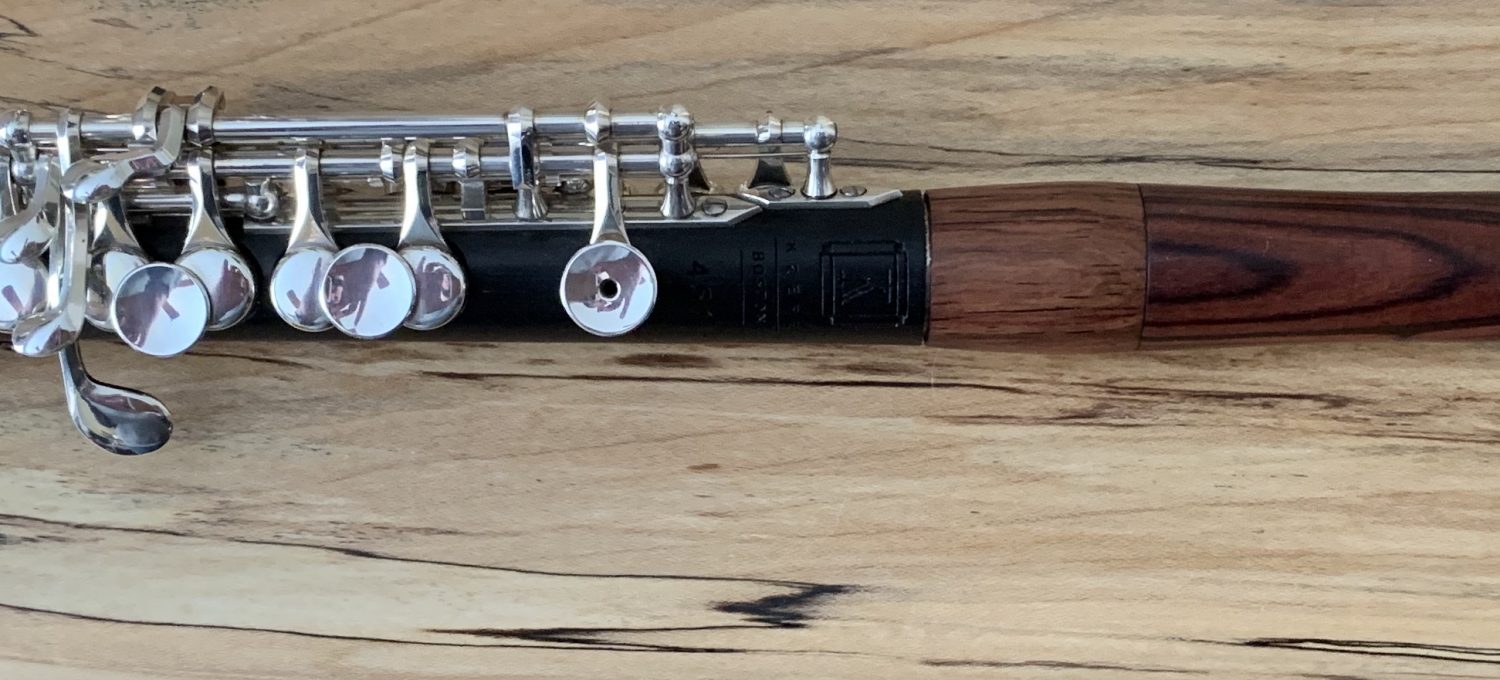I recently had a dear friend’s piccolo on my bench for an overhaul. It was a well-loved older Haynes piccolo. When an instrument of this age comes in for service, we have general expectations of the work required to put it back in top playing condition. Without getting too far into detail, the basics for a piccolo overhaul include cleaning and oiling the wood. We have to seal and level the toneholes and occasionally do some crack repair. I spend time fitting the keys and making sure the mechanism will be smooth and easy. After all of that, I choose pads, put on felts and corks, and start the padding and finishing process. Part of this process is also replacing the headjoint cork. While working on my friend’s instrument, that is the point at which I started thinking about writing this article.
So this older Haynes is now put back together and looking and feeling great. I put the headjoint on and attempted the first notes of the newly overhauled instrument. This is the moment for a technician where we get a feel for what fine tuning we might need to do and it is a moment of pride hearing the instrument that you have just rebuilt play again. In inhale and start to make the first sounds. I played fairly well for the first toot but then as I listened closer my feelings started to shift. Did I mention that this lovely old Haynes didn’t have the original headjoint, but a headjoint from another maker? The headjoint was from a good maker, as was the body, but as I played I immediately noticed the pitch, because it was low—really low. The tone was rather flat and cardboard-like. I first wondered if this piccolo a low pitch instrument, but I knew it wasn’t based on the year of production (I researched that information). Then I wondered if there was a crack that I might have missed or if the tenon was leaking. After a series of tests and time spent eliminating all potential causes for this instrument to be 15 cents flat (on average), I came to the conclusion that the headjoint just didn’t work with this piccolo.
This headjoint/body mismatch realization was then followed by measurements of body length, bore diameter (headjoint and body), embouchure placement, and tenon length. I called a few friends to compare measurements and came to the blaring realization that although the headjoint fit the tenon, the actual math involved in the headjoint and body collaboration just didn’t add up. In a sense, the headjoint placed the embouchure hole too far away from the tonehole line up. On top of that, the bore diameter of the headjoint was much smaller than bore diameter of the body. Basically, when the high pressure air moving through the headjoint got to the larger bore body, the sudden expansion of the internal space caused the pressure to drop. This sudden drop of air pressure (which also slowed the air speed) and the slightly longer sounding length created a piccolo that would never be able to play up to pitch.
Now came the hard part: making the call to the owner of the instrument, my friend, who is paying a lot of money to be told his beloved instrument has issues that can’t be solved by an overhaul alone. The trouble in having an older instrument that hasn’t been played in a while is that you can easily chalk up troubles to the need for repair. This wasn’t the case for my friend’s piccolo. Luckily, once I explained the inherent issues and that the math literally didn’t add up, he asked for suggestions. Given the measurements and some of my own previous experience with several brands of piccolos, I was able to suggest a few head joints that might work. I have a few piccolo headjoints that I have used over the years, so I was able to test out our theory as to what might work. I eliminated a few immediately because they didn’t fit or the measurements would have produced the same issues. There was one headjoint that measured a bit shorter for sounding length, but the bore diameter was much closer to the bore diameter of the body, AND it fit. As soon as I played a few notes, I knew we had a winner. Pitch was on the nose, tone was lovely, and it was so resonant.
The moral of this story…not every headjoint is meant for every flute or piccolo.
There is a great deal of math and physics involved in the design and manufacturing of musical instruments and sometimes the math of a beautiful headjoint and the math of a beautiful piccolo body actually work against each other. I have deliberately avoided naming the headjoint brands because that isn’t the point of this article and there is no perfect headjoint or one that will work on an old Haynes every time. Every person is unique and every piccolo is different. This story has a happy ending. A beautiful older instrument has a new life and can be appreciated by the player and the audience. I’ve already heard my friend play on his new set up and it is truly lovely—a match made in science!


Nice article! I am trailing piccolo HJs right now so DOu d this very helpful